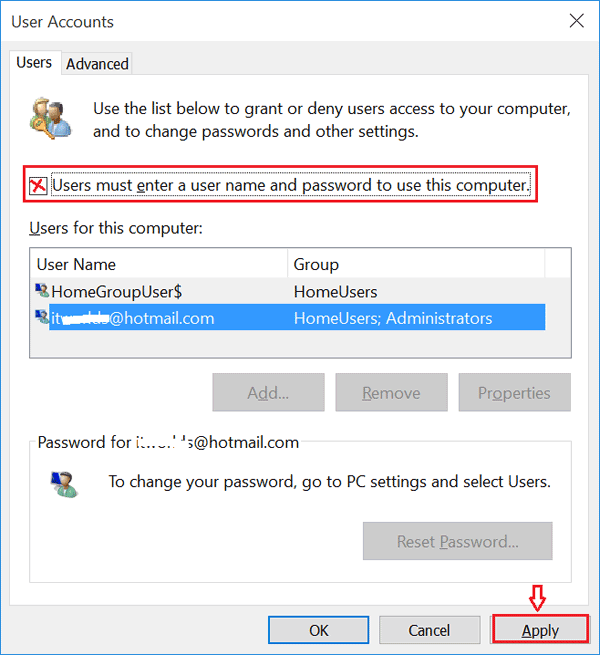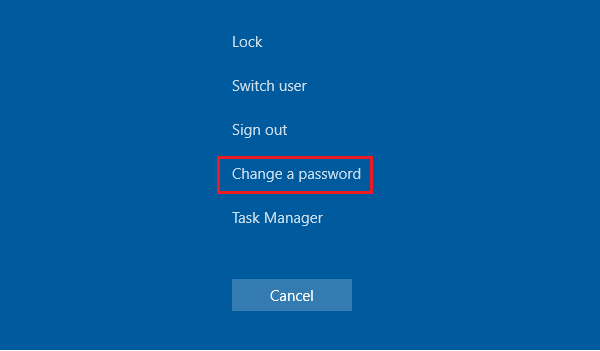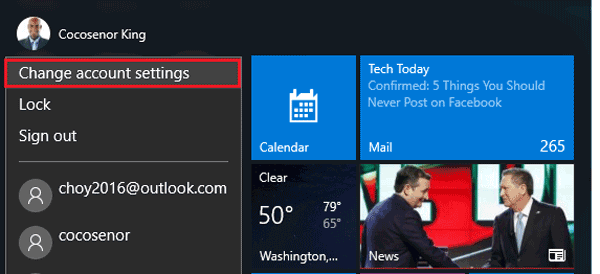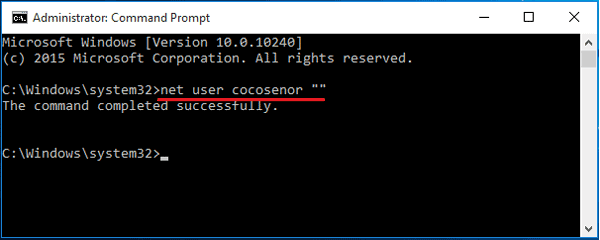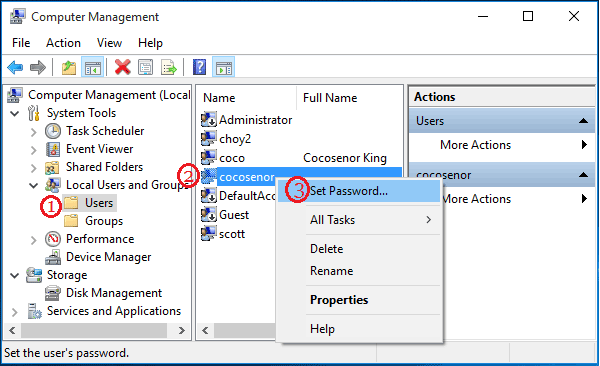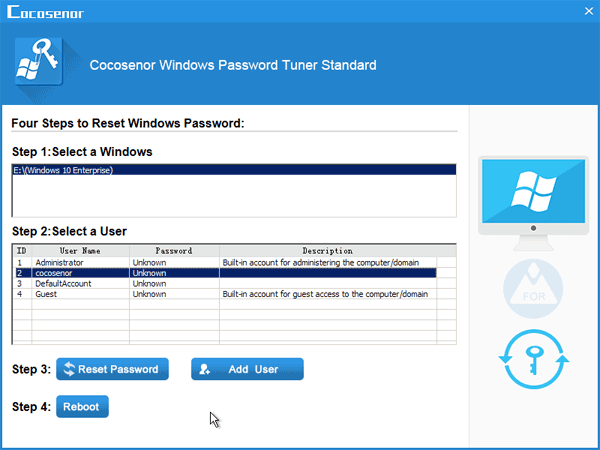- Change or reset your Windows password
- If you already know your current password and want to change it
- Reset your Windows 10 local account password
- Windows 10 version 1803 and later
- Windows 10 before version 1803
- Reset your Microsoft account password you use to sign in to your computer
- Troubleshoot problems signing in
- Reset your password
- More help with passwords in Windows 8.1
- Reset your password
- My computer is in a workgroup
- Change your password
- Windows 10 login without password – bypass it with 9 tips
- Tip 1: Disable Windows 10 login password on Users Accounts
- Tip 2: Remove Windows 10 user password with shortcut key
- Tip 3: Remove Windows 10 password from Accounts Settings
- Tip 4: Bypass Windows 10 login password with Command
- Tip 5: Delete Windows 10 password from Computer Manage
- Tip 6: Remove your account password with password reset disk
- Tip 7: Reset Win 10 password to blank with a bootable USB disk
- Tip 8: Bypass Windows 10 admin password with Setup disk
- Tip 9: Clear Windows 10 administrator password with free tool
Change or reset your Windows password
If you forgot or lost your password for Windows 10, Windows 8.1, or Windows 7, you may be able to change or reset it. To get started, choose your version of Windows from the Select Product Version drop-down menu.
If you already know your current password and want to change it
Select Start > Settings > Accounts > Sign-in options . Under Password, select the Change button and follow the steps.
Reset your Windows 10 local account password
If you’ve forgotten or lost your Windows 10 password for a local account and need to sign back in to your device, the below options might help you get up and running. For more info on local standard vs. administrative accounts, see Create a local user or administrator account in Windows 10.
Windows 10 version 1803 and later
If you added security questions when you set up your local account for Windows 10, then you have at least version 1803 and you can answer security questions to sign back in.
After you’ve entered an incorrect password:
Select the Reset password link on the sign-in screen. If you use a PIN instead, see PIN sign-in issues. If you’re using a work device that’s on a network, you may not see an option to reset your password or PIN. In that case, contact your administrator.
Note: If you don’t see security questions after you select the Reset password link, make sure your device name isn’t the same as your local user account name (the name you see when you sign in). To see your device name, right-click Start in the taskbar, select System, andscroll to the Device specifications section. If the device name is the same as your account name, you can create a new administrator account, sign in as an administrator, and then rename your PC (when you view your device name, you can also rename it).
Answer your security questions.
Enter a new password.
Sign in as usual with the new password.
Windows 10 before version 1803
For versions of Windows 10 earlier than 1803, local account passwords can’t be reset because there are no security questions. You can reset your device to choose a new password, however this option will permanently delete your data, programs, and settings. If you’ve backed up your files you’ll be able to restore your deleted files. For more information, see Recovery options in Windows 10.
To reset your device, which will delete data, programs, and settings:
Press the Shift key while you select the Power button > Restart in the lower-right corner of the screen.
On the Choose an option screen, select Troubleshoot > Reset this PC.
Select Remove everything.
Warning: Resetting your device will permanently delete data, programs, and settings.
Reset your Microsoft account password you use to sign in to your computer
On the sign-in screen, type your Microsoft account name if it’s not already displayed. If there are multiple accounts on the computer, choose the one you want to reset. Below the password text box, select I forgot my password. Follow the steps to reset your password.
Troubleshoot problems signing in
If you’re still having trouble signing to your account, see more solutions in Troubleshoot problems signing in.
Reset your password
Note: If you’ve forgotten your Windows 10 password, see Reset your Windows 10 local account password.
If you’ve forgotten your Windows 8.1 password, there are several ways to retrieve or reset it:
If your PC is on a domain, your system administrator must reset your password.
If you’re using a Microsoft account, you can reset your password online. For more info, see How to reset your Microsoft account password.
If you’re using a local account, use your password hint as a reminder.
If you still can’t sign in, you must reinstall Windows. For Windows RT 8.1, contact your PC manufacturer.
More help with passwords in Windows 8.1
If you forget or lose your password, see Reset your password above to reset or recover it.
If you think your Microsoft account password has been compromised or stolen by someone with malicious intent, we can help. For more info, see When you can’t sign in to your Microsoft account.
If you’re signing in to only your local PC, yes. However, we recommend that you keep your PC more secure by using a strong password. When you use a password, only someone who knows it can sign in. If you want to sign in to Windows with a Microsoft account, a password is required. For more info, see Can I sign in to Windows without a password? To learn more about Microsoft accounts and local accounts, see Create a user account.
Stronger passwords contain a variety of characters, including uppercase and lowercase letters, numbers, and symbols or spaces. A strong password should also be something that is difficult for a stranger to guess or crack. It shouldn’t contain a complete word, or easy-to-find details like your real name, your user name, or your birth date.
If you’re signing in to a Microsoft account, your password is limited to 16 characters. For more info about Microsoft accounts, see Create a user account.
You can update your password regularly to keep it more secure. If your PC isn’t connected to a domain, follow these steps:
Swipe in from the right edge of the screen, tap Settings, and then tap Change PC settings.
(If you’re using a mouse, point to the lower-right corner of the screen, move the mouse pointer up, click Settings, and then click Change PC settings.)
Tap or click Accounts, and then tap or click Sign-in options.
Tap or click Change your password and follow the instructions.
If your PC is connected to a domain, your system administrator might manage how frequently you must change your password. To do so, choose one of the following:
If you’re using a keyboard, press Ctrl+Alt+Delete, tap or click Change a password, and follow the instructions.
If you’re using a tablet, press and hold the Windows button, press the power button, and then tap or click Change a password and follow the instructions.
It depends on whether you’re using a third-party email address. If your email address ends in outlook.com, hotmail.com, live.com, or another Microsoft service, changing the password for your Microsoft account also changes it for that email service.
But you can use any email address for your Microsoft account, even an email address from a third-party web-based mail service like Google Mail or Yahoo! Mail. When you choose a password for your Microsoft account, it doesn’t change the password you might need to use to sign in to web mail on a third-party site.
Create a picture password to sign in with gestures instead of by entering characters.
Swipe in from the right edge of the screen, tap Settings, and then tap Change PC settings.
(If you’re using a mouse, point to the lower-right corner of the screen, move the mouse pointer up, click Settings, and then click Change PC settings.)
Tap or click Accounts, and then tap or click Sign-in options.
Under Picture password, tap or click Add, and then follow the instructions.
When you choose a password for your user account, it’s important to pick something you can remember. You’re going to need it again later!
Of course, you can also write your password down and keep it in a safe place. Taped to the underside of your laptop or the inside of your desk drawer is probably not a good idea, however. If you do write your password down, be sure to keep it separate from your PC.
For added security, use different passwords for different purposes. For example, it’s a good idea to keep distinctly different passwords for a social networking account and your online bank account.
If you do forget or lose your password, there are still several things you can try to reset or recover it. For more info, see Reset your password above to reset or recover it.
Reset your password
My computer is on a domain
Select the Start button 

On the Users tab, under Users for this computer, select the user account name, and then select Reset Password.
Type the new password, confirm the new password, and then select OK.
My computer is in a workgroup
If you type the wrong password when you attempt to log on, Windows displays a message that the password is incorrect. Select OK to close the message.
Select Reset password, and then insert your password reset disk or USB flash drive.
Follow the steps in the Password Reset wizard to create a new password.
Log on with the new password. If you forget your password again, you can use the same password reset disk. You don’t need to make a new one.
Note: If an administrator resets your password, you might lose access to some of your files.
Change your password
Press Ctrl+ Alt+ Delete, and then select Change a password.
Type your old password followed by a new password as indicated, and then type the new password again to confirm it.
Note: If you are logged on as an administrator, you can create and change passwords for all user accounts on the computer.
Warning: If you use an administrator account to change a password for another account, any encrypted files or e mail messages for that other account will no longer be accessible to the person who was using that account.
Windows 10 login without password – bypass it with 9 tips
If want to login Windows 10 without password, you can disable or remove it. Here will show you 9 tips to bypass password on Windows 10 in the case of still remember the old password or forgot password.
Tip 1: Disable Windows 10 login password on Users Accounts
1. Press «Windows + R» to open Run , on the text box type in: netplwiz , and then press «Enter» .
2. On the Users Accounts page, uncheck the check box beside «Users must enter a user name and password to use this computer.» , and then click on «Apply» .
3. On the Automatically sign in page, enter «User name» , «Password» , and «Confirm Password» , click on «OK» .
4. Go back to the User Accounts page, click on OK to close it.
5. Restart your device, and then you will login windows 10 automatically without password.
If you are using Microsoft account, you can’t remove the password from it, if want to login without password, disable Windows 10 password by the method above, or switch to local account, and then remove the password following the methods below.
Tip 2: Remove Windows 10 user password with shortcut key
1. Press shortcut key «Ctrl + Alt + Delete» , and then click on «Change a password» .
2. Enter «Old password» , leave the «Current password» and «Confirm password» text box blank, and press Enter .
Do you think it is simple and quick too? Just move your finger and press on the keyboard to have a try.
Tip 3: Remove Windows 10 password from Accounts Settings
1. Click on Start в†’ your user account, в†’ «Change account settings» .
2. Select «Sign-in options» в†’ «Change» .
3. Enter your Current password and click on «Next» .
4. Leave the password box blank, and click on «Next» directly.
5. The next time on the login screen, click on Sign in button, you will log into Windows 10 without typing password.
You also can remove your Windows 10 Pin code or Picture password by this way.
If you forgot your current password, try to sign in with other sign-in options, such as Pin code or Picture password, or login with another user account who owns administrator privilege too. And then bypass Windows 10 password following the two methods below.
Tip 4: Bypass Windows 10 login password with Command
1. After getting into system, right-click on Start , select «Command Prompt (Admin)» .
2. Use this command: net user , to remove Windows 10 password.
For example, your user name is cocosenor, to remove the password by typing in the command: net user cocosenor «» .
Tip 5: Delete Windows 10 password from Computer Manage
1. Get into Windows, right-click «This PC» , select «Manage» .
2. Find «Local Users and Groups» and expand it.
3. Double-click «Users» , right-click your user account, select «Set Password» .
4. If no data will lose by this way, click on «Proceed» , and leave the password box blank, click on OK , your password will be deleted forever.
If you are locked out of your Windows 10 computer, how to bypass logon screen and unlock computer without password?
Tip 6: Remove your account password with password reset disk
If you have created a password reset disk from your Windows 10 device before forgetting password, you can use it to remove or reset Windows 10 password without login easily.
1. Insert the password reset disk into your PC device, on the logon screen, press Enter directly.
2. You will get the message, «Your password is incorrect.» Click on Ok , click on «Reset password» , and then follow the instructions to reset an empty password on the text box.
Tip 7: Reset Win 10 password to blank with a bootable USB disk
If don’t have a reset disk to reset the forgotten password, you can create one on another accessible computer with password recovery tool. Steps as below:
1. Get Windows Password Tuner Standard to install on an accessible computer. Windows Password Tuner can be install on any Windows.
2. Insert a USB, and follow the instructions on the dialog to create a password recovery disk.
Click «USB device» to select you USB, and then click on «Begin Burning» .
4. When the Windows Password reset window comes out, follow the steps to reset Windows 10 password, and then the password will be set to blank.
5. Reboot to the login screen, click on your account, you will get into Windows 10 without password smoothly.
Tip 8: Bypass Windows 10 admin password with Setup disk
Do you have a Windows 10 installation disk? Make full use of it. Here is not use it to reinstall or repair Windows 10 operating system, use it to bypass Windows 10 administrator password.
Don’t have a setup disk? You can create one with a USB or CD disk through the Media Creation tool from Microsoft site: https://www.microsoft.com/en-us/software-download/windows10.
Tip 9: Clear Windows 10 administrator password with free tool
It is said that the Offline NT Password & Registry Editor can help to clear administrator password on Windows XP/Vista/7. But if it can work on Windows 10, I don’t test it on my Windows 10 computer yet. If you are interested in it, download it from the site: https://pogostick.net/
pnh/ntpasswd/, and just have a try.
Attention: If no protected password on your Windows 10 logon screen, that is just like your front door is unlocked, everyone who can reach your device, can access it too. If want to keep others unauthorized from accessing, set a password on your PC device is necessary, I think.
